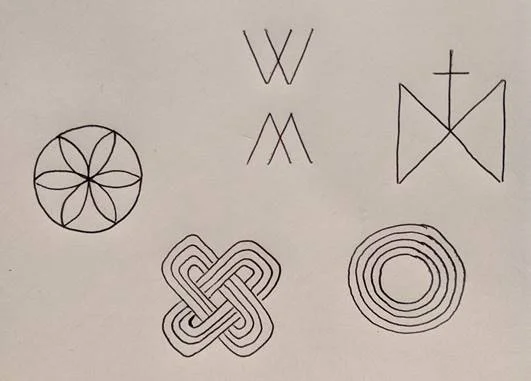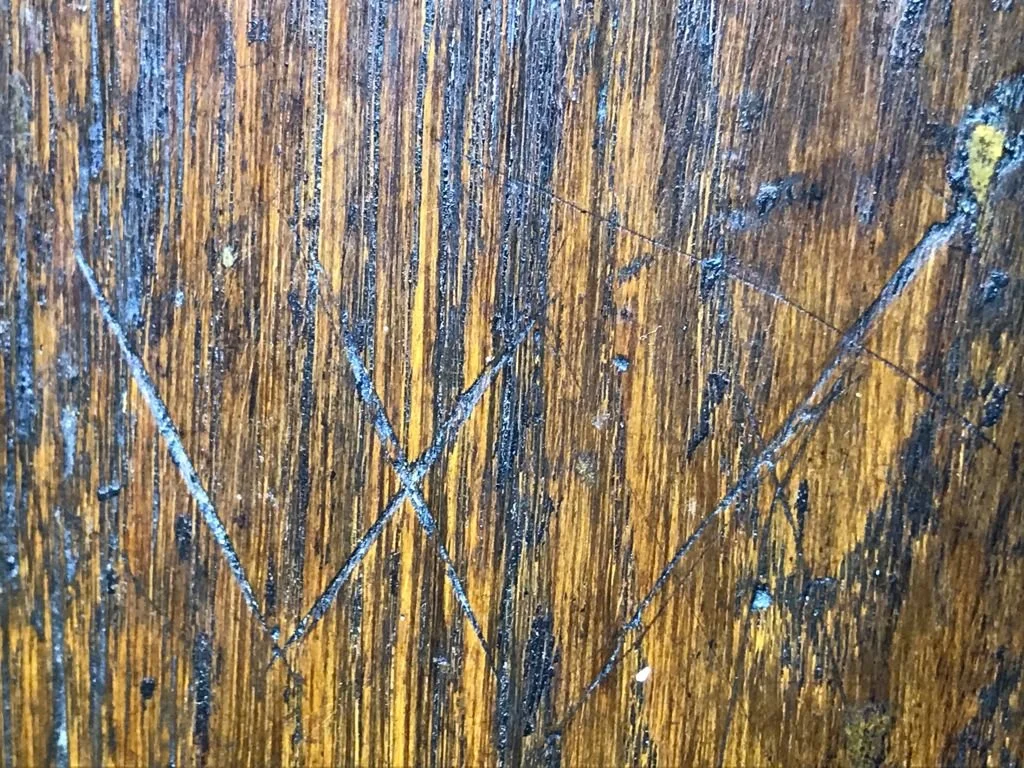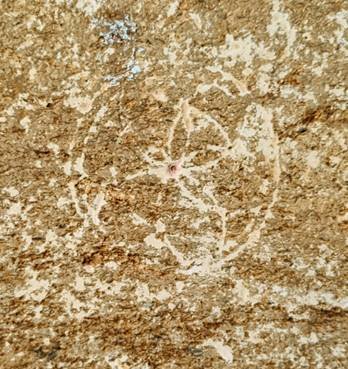Witch Marks & Daisy Wheels
by Alexandra Macartney
Do you live in an old house or cottage in Chiselborough? Does it contain a Witch Mark?
Witch Marks, or Witches’ Marks, are man-made markings sometimes found in old properties. They come from a time when belief in superstition was part of everyday life. The creation of witch marks was believed to ward off evil spirits, witches and the ‘Evil Eye’, to give protection to a building or place and to those who lived or worked there. Although many of the symbols associated with witch marks date back to much earlier times, the great majority are found in buildings from the medieval period through to the early nineteenth century.
Witch marks are also referred to as ritual protection marks and apotropaic markings, the latter from the Greek word apotropaios translated as turning away evil.
What do Witch Marks look like?
Witch Marks can be semi-runic, straight-lined, scratched letters, crosses and circular shapes. Common examples are the hexfoil/hexafoil, also known as a Daisy Wheel, and overlapping Vs, known as Marian Marks.
The Daisy Wheel is the most commonly found mark and is seen as both protection against evil and a good luck symbol. It’s often found in food preparation areas.
Conjoined Vs can be seen as W, or when inverted as M. They are believed to stand for Virgo Virginium, Virgin of Virgins, and possibly intended as invocations to the Virgin Mary to protect the site where the marks were made.
Witch marks can be small, faint and sometimes difficult to see except in the direct light of an angled torch. However, they can also be large, i.e. Daisy Wheels the size of a dinner plate.
Illustrations of Witch Marks:-
From top middle clockwise:-
o Marian marks
o Butterfly cross
o Concentric circles
o Solomon’s knot
o Hexafoil/Daisy Wheel
Overlapping Vs recently found in old wall panelling in a Devon farmhouse kitchen.
Where are Witch Marks found?
Witch marks were etched into stone, plaster and woodwork, usually during the construction of a building and often by tradesmen. The marks can be found in all types of buildings from barns and cottages to grand houses, chapels and churches. They can also be found on furniture, roof timbers, gravestones and in caves. Markings on domestic buildings were often made where drafts would occur—windows, doorways, hatches, stairways, hearths and chimney breasts. These locations being considered as places where the moving air could aid ‘evil’ to enter.
Somerset has a bountiful collection of identified witch marks, from inside the Wookey Hole caves to National Trust properties. If you’re aware of or find a witch mark/s in your home, or maybe in an agricultural building, in Chiselborough—if you’d like to, do let us know. We’d love to record the findings. The marks may be very worn and faint, but what you might have formerly considered to be someone’s scratched initials, or some old graffiti may, on closer inspection, turn out to be a witch mark!
There is a lot of information to be found on the internet about these marks.
Note: Witch marks are not the same as Carpenters’ Marks.
Photographs of Witch Marks / Daisy Wheels found in houses in Chiselborough:
A small Daisy Wheel from a doorway in a Chiselborough cottage.
Carved stone with circle containing six-pointed star, initials GH, and numerals, 18 and possibly 84. Corner Cottage, Chiselborough.
Marking from a cottage in Fair Place (the carving is digitally highlighted in yellow for easier viewing)
Many thanks to Alexandra for this superb feature. I’m happy to add photos of any more findings of these marks in our village. Please simply send them to me as email attachments! —Sara




